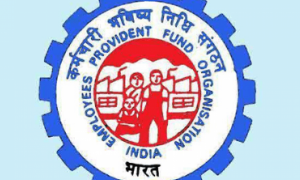Post the scheme categorization announced for active equity mutual funds, a new category came up as large and mid-cap funds. This is the Venn diagram intersection product which has been mandated to invest in the top 100 listed companies by market cap considered largecap category and invest in the next 150 listed companies by market cap, which collectively are the midcap companies. Effectively, this category of equity mutual funds invests majorly in the top 250 listed companies.
Read More:- Centre Announces New Unified Pension Scheme; Check Out Salient Features
How large are these companies? To put in perspective, the mutual fund industry association which releases (every six months) the list of all permissible listed companies, wherein mutual funds can invest in their equity schemes. This list has 5049 companies, and the total market capitalisation of these companies is Rs. 397.09 lac crores (as on end June 2024). The largecap -top 100 companies (out of this 5049) have a market cap of Rs 252.65 lac crores. The midcap – next 150 companies have a market cap of Rs. 72.30 lac crores. Put together, these 250 companies add up Rs 325 lac crores of market cap, a whopping 82% of the total value of all companies listed. In other words, 5% of the total companies listed make up 82% of the total value of all listed companies. Therefore, this is a formidable part of the listed equity markets. Industry leaders, leading sectors, indicators of the Indian economy, etc. are the part of these 250 businesses.
Also Read– Big News For Central Government Employees: Pensions Hiked To This Much Under Unified Pension Scheme
For an investor this category therefore allows them to invest in a larger play area. They have the option to invest in a largecap fund or a mid-cap fund. However, the large and mid-cap category, allows a blended alternative that invests a minimum 35% each in largecap and midcap categories. So, 70% of the scheme will always be split equally into both categories. Also, the 250th company currently is around Rs. 27500 crores of market cap and the 1st company is currently sized at Rs. 19.50 lac crores. This is a growth of 71 times from the 250th to the 1st ranked company. So, there is long path for growth for such companies. This path is the essence of a large and mid-cap fund, as it is trying to capture in this fund.
In an active equity fund in this category, investors can participate in the leading companies as chosen by the fund managers through the fund house investment process rigor. The fund managers via their selection process and evaluation metrics can string together a portfolio of durable long term investment ideas which could grow in the long term. The fund managers also have an option to invest in compelling ideas in beyond the 250 companies’ universe in the balance 30% portion of the portfolio. Therefore, the fund manager can have a diversified fund with a 70/30 allocation between the top 250 companies/ rest of the investment universe if required.
Also Read : What Is ‘Vigyan Dhara’ Scheme Approved By Union Cabinet With Outlay Of Rs 10,579 Crore?
In the current economic landscape, wherein India witness’s formalisation of the economy, people and businesses are getting more mainstreamed, connectivity improvement by investments in infrastructure creation & upgradation. Despite, weak global cues, impact of COVID led disruptions, India in the last decade has moved its global GDP ranking to 5th from 11th, which should be seen considering the disbalances and challenges of the last few years. With policy continuity and focus on fiscal prudence and spending on critical areas for the future, the current landscape will continue to throw sound long term business investment ideas. This is the opportunity which a diversified equity fund concentrating on the top 250 companies would invest into. These companies have grown in the past and could continue to grow in the future as the Indian economy grows. Secondly, these large companies are large in India, yet they could be much smaller than their global counterparts in the same line of business. For e.g. By assets, India’s largest bank is ranked 47th in the world’s largest bank list. India’s 12 key ports together handle less than 25% of the total containers handled by the world’s largest port. India sold 1.5mn electric vehicles in 2023, China sold 8.1mn electric vehicles in the same tenure. As a country emerges from low income to middle income, India’s per capita GDP is US $2730, far behind China at US $ 13140 vs USA at US$ 85370 (IMF Data July 2024). On most metrics, we have traversed a long path, yet the future seems to indicate a large runway for growth ahead compared to the economic landmarks of the past two decades.
Read More:- Understanding pre-EMI interest deductions on home loans: What you need to know
Investors who would want to participate in these growth themes could consider the Large & Mid Cap funds, a category benefiting from the strength of largecap companies and the agility of mid-cap. Such funds could form a core holding investment option for the long term.
Source: RBI, CCIL, MOSPI, Amfiindia.com – as of June 2024, Bloomberg IMF, 2030 estimates from CEBR (The Centre for Economics and Business Research. Data as of 31 July 2024.
Disclaimer: All figures and data given in the document are dated unless stated otherwise. In the preparation of the material contained in this document, the ITI Asset Management Limited (“AMC”) has used information that is publicly available. However, the AMC does not warrant the accuracy, reasonableness and/ or completeness of any information. The information provided is not intended to be used by investors as the sole basis for investment decisions, who must make their own investment decisions, based on their own investment objectives, financial positions and needs of specific investor. Investors are advised to consult their own legal tax and financial advisors to determine possible tax, legal and other financial implication or consequence of subscribing to the units of ITI Mutual Fund. The information contained herein should not be construed as a forecast or promise nor should it be considered as investment advice. The AMC (including its affiliates), the Mutual Fund, the trust, and any of its officers, directors, personnel, and employees, shall not be liable for any loss, or damage of any nature, including but not limited to direct, indirect, punitive, special, exemplary, consequential, as also any loss of profit in any way arising from the use of this material in any manner. The statements made herein may include statements of future expectations and other forward-looking statements that are based on our current views and scenarios and involve known and unknown risks and uncertainties that could cause actual results, performance or events to differ materially from those expressed or implied in such statements. Readers shall be fully responsible/liable for any decision taken on the basis of this information.





































